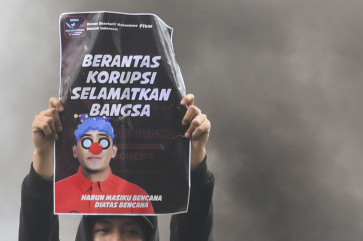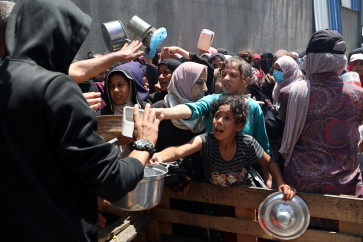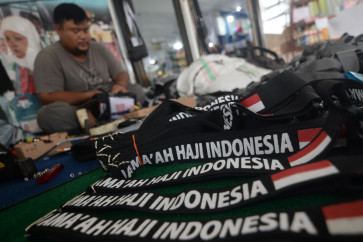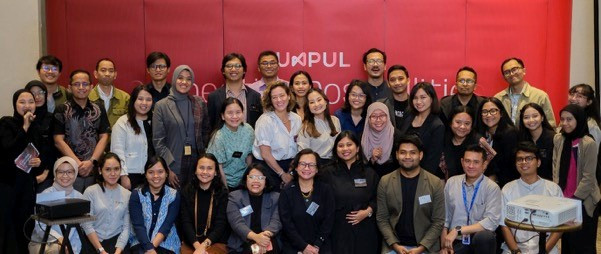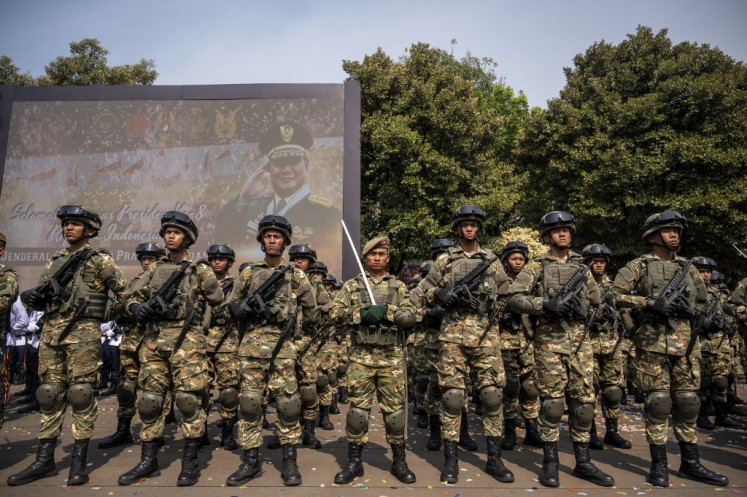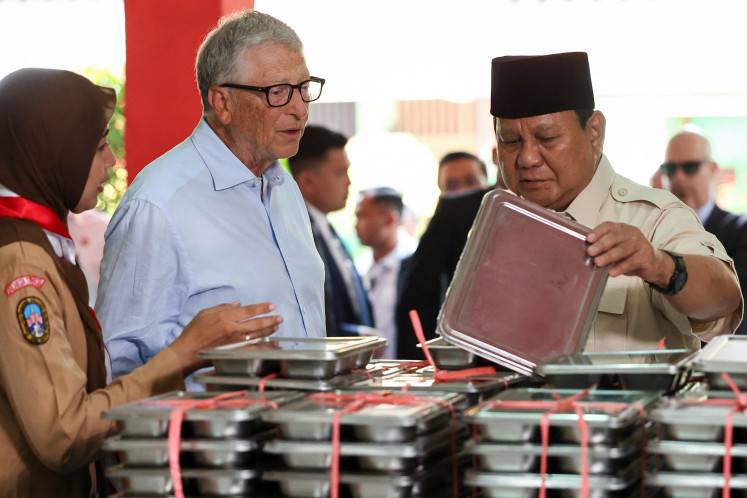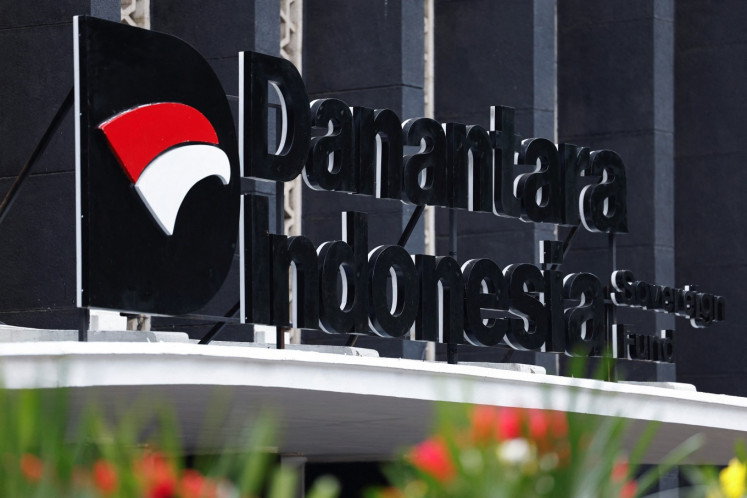CEIA encourages government to accelerate clean energy campaign
Change text size
Gift Premium Articles
to Anyone
 Accelerators: H&M regional sustainability manager Anya Sapphira (second left), World Resources Institute (WRI) Indonesia climate and energy manager Almo Pradana (right), Allotrope Partners country director Gina Lisdiani (center), IFM and Energy Procter & Gamble Indonesia purchases manager of capital Rangga Mahesa Putera (second right) and H&M Indonesia sustainability program manager (left) have a discussion on the sidelines of a media conference on Clean Energy Investment Accelerator (CEIA) Indonesia in Jakarta on July 23.
More than a hundred multinational companies have pledged 100 percent use of renewable energy. CEIA Indonesia has provided assistance for the past year to some of the companies in procuring the renewable energy for electricity and power supply. (Courtesy of Yudhi Mahatma/WRI Indonesia)
Accelerators: H&M regional sustainability manager Anya Sapphira (second left), World Resources Institute (WRI) Indonesia climate and energy manager Almo Pradana (right), Allotrope Partners country director Gina Lisdiani (center), IFM and Energy Procter & Gamble Indonesia purchases manager of capital Rangga Mahesa Putera (second right) and H&M Indonesia sustainability program manager (left) have a discussion on the sidelines of a media conference on Clean Energy Investment Accelerator (CEIA) Indonesia in Jakarta on July 23.
More than a hundred multinational companies have pledged 100 percent use of renewable energy. CEIA Indonesia has provided assistance for the past year to some of the companies in procuring the renewable energy for electricity and power supply. (Courtesy of Yudhi Mahatma/WRI Indonesia)
C
ompanies are aiming to transform themselves into renewable energy users as part of their clean energy goals and in support of Indonesia’s target of having an environmentally friendly energy mix by 2025.
“Transitioning to clean energy is part of our responsibility to the customers,” Anya Sapphira, regional sustainability manager of H&M Production Office, said.
The Sweden-based apparel company is one of 14 companies partnering with the Clean Energy Investment Accelerator (CEIA) in Indonesia, which is jointly led by the World Resource Institute (WRI), Allotrope Partners and the National Renewable Energy Laboratory (NREL).
Also operating in Colombia, Mexico, the Philippines, and Vietnam, the CEIA was launched to accelerate clean power usage in the commercial and industrial sectors and support member companies in meeting their clean energy and climate commitments.
“Big companies like Unilever and P&G have already pledged their commitment to renewable energy. One is seeking to meet their target next year; another is looking ahead for 2030. The corporate demand for renewable energy is real, and it presents economically viable investment opportunities,” Gina Lisdiani, representative of Allotrope Partners for CEIA Indonesia, said.
“The demand from companies is huge and this should be seen by the government as a big economic opportunity.”
Indonesia set a target to increase the use of clean energy from its current level of 12 percent to 23 percent of energy use by 2025, but progress toward this goal has been slow.
Countries around the globe are committed to shifting to renewables. However, the transition from fossil fuels to clean energy in emerging countries like Indonesia involves a range of barriers that must be overcome. CEIA Indonesia aims to bring more companies into the partnership to help speed up progress toward clean energy goals and communicate key challenges to the government, and solutions to addressing these challenges.
CEIA Indonesia has demonstrated the demand for renewable energy in the market and is raising awareness of this growing movement with government and utility partners.
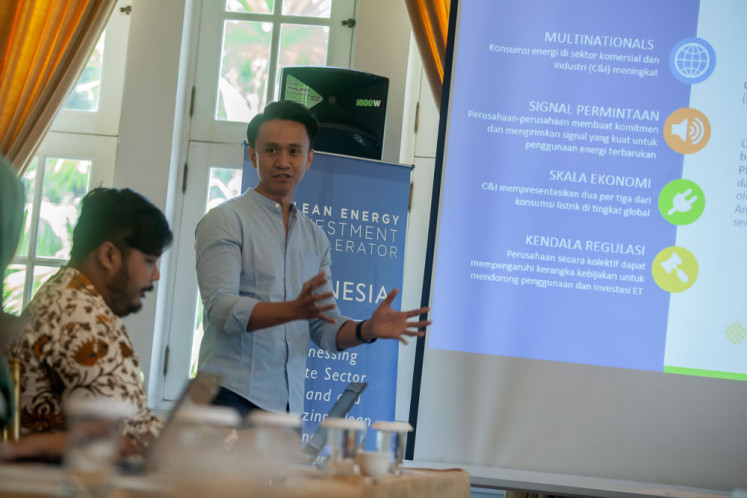
“We collectively engage the government to accelerate its commitment to clean energy. Conveying input from the private sector and insights from global best practices can help the government’s policy to become conducive [to supporting clean energy],” Almo Pradana, representative of WRI Indonesia for CEIA Indonesia, said.
The companies that are currently partnered with the CEIA already need more than 3 million megawatt-hour (MWh) of clean energy each year to satisfy their demands.
The CEIA will work with the government to reduce barriers to renewable energy investment and let the committed companies help the government reach its 2025 target.
In Southeast Asia, Indonesia accounts for nearly 40 percent of total energy use among ASEAN members and is set to become the seventh-largest economy in the world by 2030, with energy consumption growing by 80 percent from current levels, according to GlobeAsia.
H&M has set a goal for 100 percent clean energy by 2030. In Indonesia, H&M works with 35 suppliers consisting of 85 production units, only two of which currently use solar power.

“Our vision is to help mitigate climate change. One of the solutions is committing ourselves to using renewable energy,” Anya said.
“Indonesia is rich with alternative energy sources such as solar power and geothermal [energy]. Unfortunately, the government’s current policies are not conducive to widespread and rapid renewable energy deployment in the manufacturing industry.
“The fact that the private sector has a huge demand for renewable energy must be met with supporting infrastructure and policy. Renewable energy indeed carries huge potential for investment in Indonesia.”

